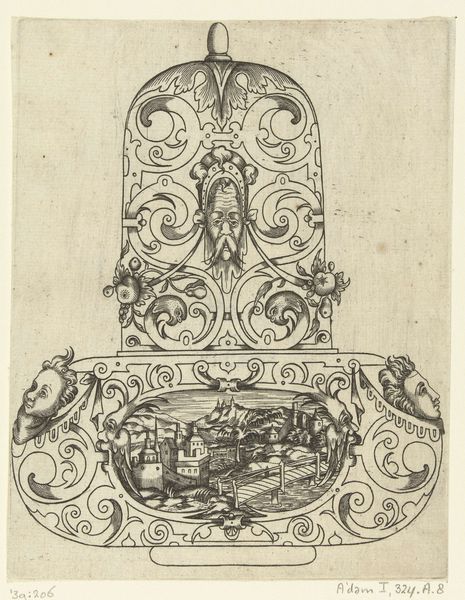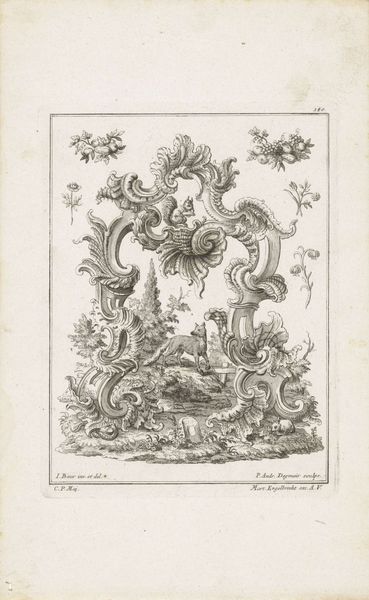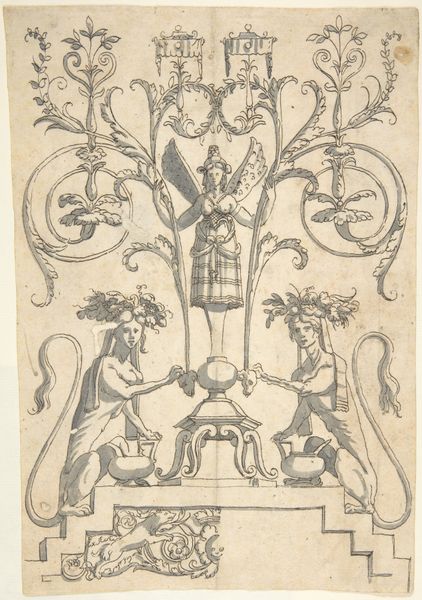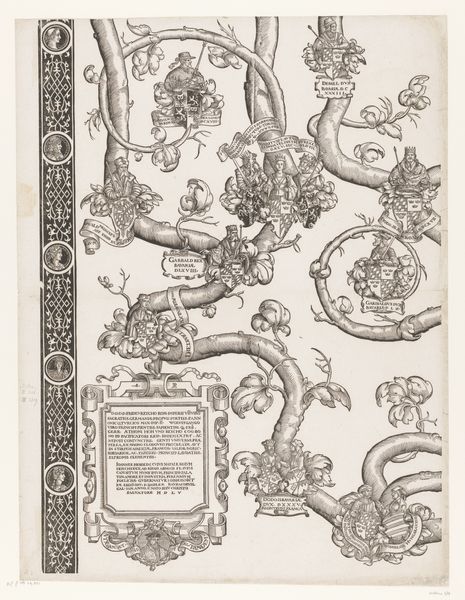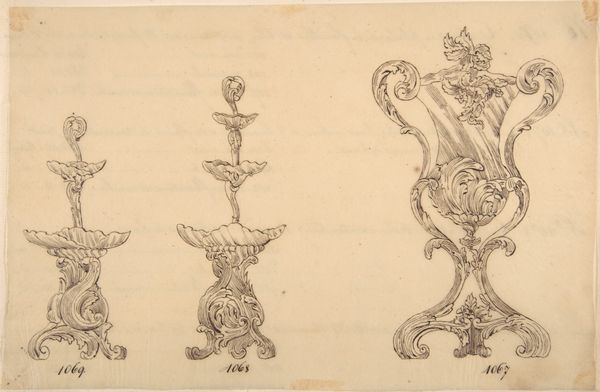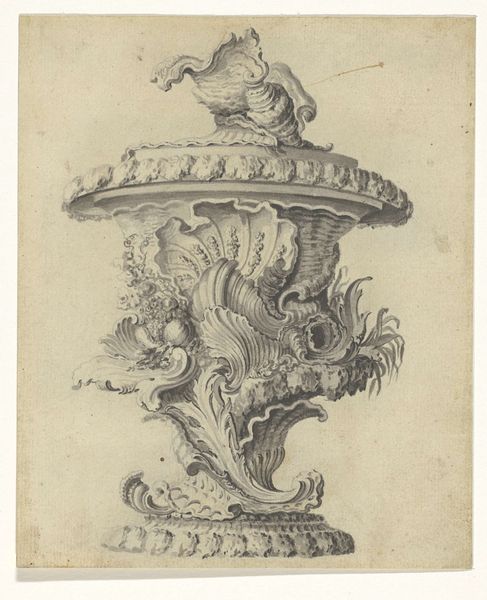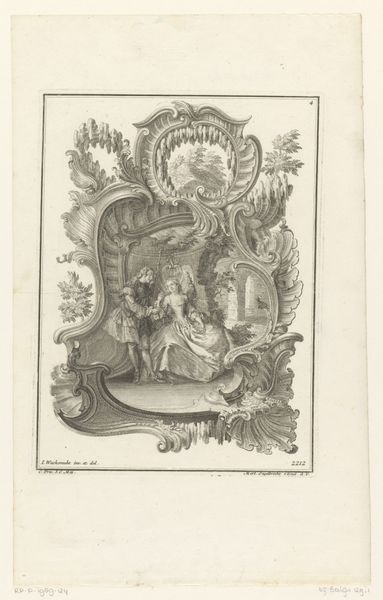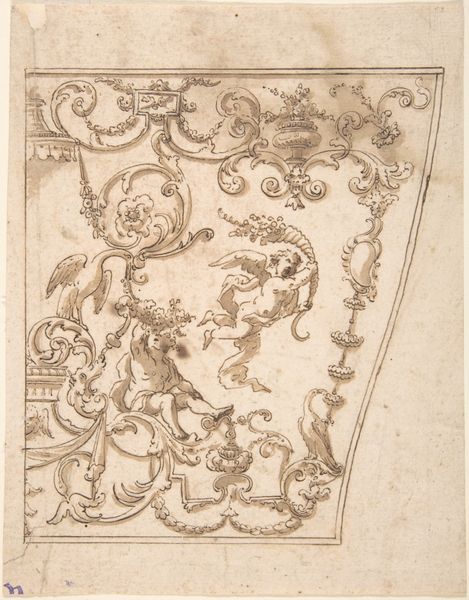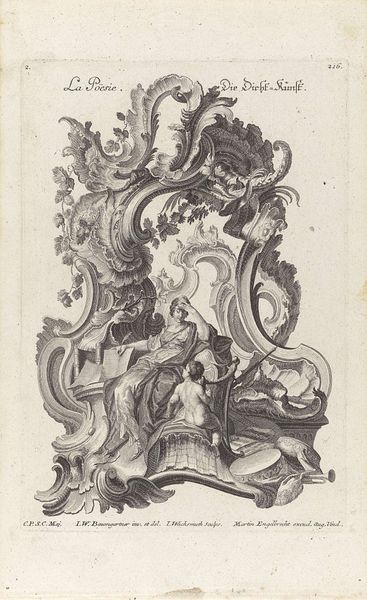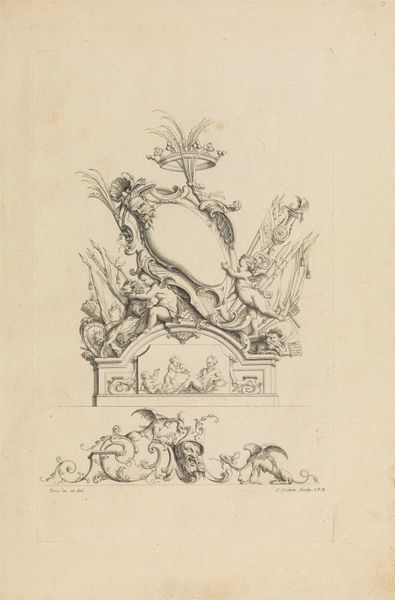
drawing, print, ink, pen
#
drawing
#
ink drawing
#
allegory
#
pen drawing
# print
#
ink
#
pen
#
history-painting
#
decorative-art
Dimensions: sheet: 11 1/4 x 8 3/8 in. (28.6 x 21.3 cm)
Copyright: Public Domain
Curator: This ink drawing from the 19th century, housed here at the Met, offers two elaborate "Designs for Two Candelabras," attributed to an anonymous hand. What strikes you first about this work? Editor: The sheer exuberance! The drawings burst with ornate details – the flourishes, the allegorical figures interwoven within the candelabra design…it’s all quite maximalist. Curator: Indeed. Observe how the ink meticulously delineates the form of each decorative element. There is a sophisticated mastery in the layering of these features to build up to the structural forms themselves. What semiotic significance do you ascertain? Editor: For me, it’s about luxury and display. Consider the labor involved, from the artisan creating the original designs to the foundry workers and metalsmiths crafting the final pieces. It speaks of wealth, status, and a desire to illuminate not just a space, but a certain lifestyle. These are objects intended to impress. Curator: An excellent observation! The sinuous lines and flourishes suggest a playful dance between natural forms and stylized design. Do the candelabras function as objects, or are they statements within interior space? Editor: Perhaps both. But consider the availability of such craftsmanship. Access depended entirely on factors such as class, trade relationships, and the exploitation of certain skilled workers. The drawing may highlight aspiration more than material culture itself. Curator: Fascinating. And even within the drawing itself, consider how light is depicted with cross-hatching and a focus on contrasts. The formal elements create the impression of luminosity through the suggestion of metallic reflectance. Editor: True. I wonder though, who the artist had in mind when crafting such details. What specific network of suppliers, pattern makers, and clients, allowed such ornamental arts to proliferate. Curator: So while I find the emphasis to be on aesthetic complexity and harmonic elegance, you're drawn more toward the social networks involved in its production? Editor: Exactly. These candelabras weren't born in a vacuum; their beauty is inextricably linked to complex systems of labor and power. Curator: A valid point, and one that deepens our understanding of not only the artistic skill, but the socio-economic landscape in which they came into being. Editor: Ultimately, recognizing the interplay between aesthetic choices and production methods empowers us to critique these beautiful objects on a whole new dimension.
Comments
No comments
Be the first to comment and join the conversation on the ultimate creative platform.


